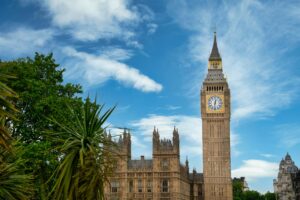The ascension of King Charles III to the British throne marked a new chapter in the history of the monarchy. As the longest-serving heir apparent in British history, Charles III brought with him decades of experience, a deep sense of duty, and a clear vision for the future of the institution he now leads. His reign is not merely a continuation of tradition but a transformative era aimed at modernizing the monarchy while preserving its timeless essence.
A Modern Monarch for a Modern Era
King Charles III has long been an advocate for progress and adaptation. Throughout his years as Prince of Wales, he championed causes ranging from environmental sustainability to social justice, earning both praise and criticism for his outspoken nature. Now, as monarch, he has the opportunity to align the monarchy more closely with the values and concerns of contemporary society.
One of his key priorities is addressing climate change. Charles has been a vocal environmentalist for decades, long before the issue gained global prominence. His vision includes leveraging the monarchy’s influence to promote sustainable practices and encourage international cooperation on environmental issues. By doing so, he aims to position the British monarchy as a leader in the fight against climate change, ensuring its relevance in an era defined by ecological challenges.
A Slimmed-Down Monarchy
Another cornerstone of King Charles III’s vision is the concept of a “slimmed-down” monarchy. Recognizing the need for the institution to adapt to changing public expectations, he has expressed a desire to reduce the number of working royals and streamline royal operations. This approach not only reflects a more cost-effective and efficient model but also aligns with the public’s growing demand for transparency and accountability.
By focusing on a smaller, more focused group of senior royals, Charles aims to ensure that the monarchy remains a unifying force in British society. This shift also allows for a more personal connection between the royal family and the public, fostering a sense of accessibility and relatability that is crucial in the 21st century.
Preserving Tradition While Embracing Change
While King Charles III is committed to modernization, he is equally dedicated to preserving the rich traditions and heritage of the monarchy. He understands that the monarchy’s enduring appeal lies in its ability to balance continuity with evolution. From ceremonial events like the State Opening of Parliament to the annual Trooping the Colour, Charles has emphasized the importance of maintaining these time-honored traditions as symbols of national identity and unity.
At the same time, he has shown a willingness to adapt these traditions to reflect contemporary values. For example, he has expressed support for a more inclusive approach to royal events, ensuring that they resonate with the diverse communities that make up modern Britain. This delicate balance between tradition and progress is central to his vision for the monarchy’s future.
Strengthening the Commonwealth
The Commonwealth of Nations remains a cornerstone of the British monarchy’s global influence, and King Charles III is deeply committed to strengthening these ties. As the head of the Commonwealth, he has emphasized the importance of fostering unity and cooperation among its member states, particularly in addressing shared challenges such as climate change, economic inequality, and social justice.
Charles’s vision for the Commonwealth is one of partnership and mutual respect. He has advocated for greater collaboration between member nations, leveraging the monarchy’s unique position to promote dialogue and understanding. By doing so, he hopes to ensure that the Commonwealth remains a vital and dynamic force in the global arena.
A Monarchy for All
Above all, King Charles III envisions a monarchy that is inclusive and representative of all Britons. He has spoken openly about the need for the royal family to reflect the diversity of modern Britain and to engage with communities that have historically felt disconnected from the institution. This includes reaching out to younger generations, who often view the monarchy through a different lens than their predecessors.
Through initiatives that promote education, community engagement, and cultural exchange, Charles aims to demonstrate the monarchy’s relevance in an increasingly diverse and interconnected world. By embracing change and fostering a sense of belonging, he hopes to ensure that the monarchy remains a cherished institution for generations to come.
Conclusion
King Charles III’s vision for the future of the British monarchy is one of thoughtful evolution. By embracing modernization, promoting sustainability, and fostering inclusivity, he seeks to ensure that the monarchy remains a vital and respected institution in the 21st century. At the same time, his deep respect for tradition and heritage ensures that the monarchy’s timeless essence is preserved.
As the world watches this new chapter unfold, one thing is clear: King Charles III is determined to lead the monarchy into a future that is both rooted in history and responsive to the needs of a rapidly changing world. His reign promises to be a defining moment in the story of the British monarchy, one that will shape its legacy for generations to come.
